RSR's List of Not So Old Things
This is the show from Friday, June 25th, 2021
SUMMARY:
 [While Bob & Cheryl Enyart go fishing we invite you to enjoy from the RSR archives our favorite List of Not So Old Things! Photos from today, June 25, 2021.]
[While Bob & Cheryl Enyart go fishing we invite you to enjoy from the RSR archives our favorite List of Not So Old Things! Photos from today, June 25, 2021.]
-- Finches Diversify in Decades, Opals Form in Months, Man's Genetic Diversity in 200 Generations, C-14 Everywhere: Real Science Radio hosts Bob Enyart and Fred Williams present their classic program that led to the audience-favorites rsr.org/list-shows! See below and hear on today's radio program our list of Not So Old and Not So Slow Things! From opals forming in months to man's genetic diversity in 200 generations, and with carbon 14 everywhere it's not supposed to be (including in diamonds and dinosaur bones!), scientific observations fill the guys' most traditional list challenging those who claim that the earth is billions of years old. Many of these scientific finds demand a re-evaluation of supposed million and billion-year ages.
 * Finches Adapt in 17 Years, Not 2.3 Million[/b]: Charles Darwin's finches are claimed to have taken 2,300,000 years to diversify from an initial species blown onto the Galapagos Islands. Yet individuals from a single finch species on a U.S. Bird Reservation in the Pacific were introduced to a group of small islands 300 miles away and in at most 17 years, like Darwin's finches, they had diversified their beaks, related muscles, and behavior to fill various ecological niches. Hear about this also at rsr.org/spetner.
* Finches Adapt in 17 Years, Not 2.3 Million[/b]: Charles Darwin's finches are claimed to have taken 2,300,000 years to diversify from an initial species blown onto the Galapagos Islands. Yet individuals from a single finch species on a U.S. Bird Reservation in the Pacific were introduced to a group of small islands 300 miles away and in at most 17 years, like Darwin's finches, they had diversified their beaks, related muscles, and behavior to fill various ecological niches. Hear about this also at rsr.org/spetner.
 * Opals Can Form in "A Few Months" And Don't Need 100,000 Years[/b]: A leading authority on opals, Allan W. Eckert, observed that, "scientific papers and textbooks have told that the process of opal formation requires tens of thousands of years, perhaps hundreds of thousands... Not true." A 2011 peer-reviewed paper in a geology journal from Australia, where almost all the world's opal is found, reported on the: "new timetable for opal formation involving weeks to a few months and not the hundreds of thousands of years envisaged by the conventional weathering model." (And apparently, per a 2019 report from Entomology Today, opals can even form around insects!) More knowledgeable scientists resist the uncritical, group-think insistence on false super-slow formation rates (as also for manganese nodules, gold veins, stone, petroleum, canyons and gullies, and even guts, all below). Regarding opals, Darwinian bias led geologists to long ignore possible quick action, as from microbes, as a possible explanation for these mineraloids. For both in nature and in the lab, opals form rapidly, not even in 10,000 years, but in weeks. See this also from creationists by a geologist, a paleobiochemist, and a nuclear chemist.
* Opals Can Form in "A Few Months" And Don't Need 100,000 Years[/b]: A leading authority on opals, Allan W. Eckert, observed that, "scientific papers and textbooks have told that the process of opal formation requires tens of thousands of years, perhaps hundreds of thousands... Not true." A 2011 peer-reviewed paper in a geology journal from Australia, where almost all the world's opal is found, reported on the: "new timetable for opal formation involving weeks to a few months and not the hundreds of thousands of years envisaged by the conventional weathering model." (And apparently, per a 2019 report from Entomology Today, opals can even form around insects!) More knowledgeable scientists resist the uncritical, group-think insistence on false super-slow formation rates (as also for manganese nodules, gold veins, stone, petroleum, canyons and gullies, and even guts, all below). Regarding opals, Darwinian bias led geologists to long ignore possible quick action, as from microbes, as a possible explanation for these mineraloids. For both in nature and in the lab, opals form rapidly, not even in 10,000 years, but in weeks. See this also from creationists by a geologist, a paleobiochemist, and a nuclear chemist.
* Finches Speciate in Two Generations vs Two Million Years for Darwin's Birds? Darwin's finches on the Galapagos Islands are said to have diversified into 14 species over a period of two million years. But in 2017 the journal Science reported a newcomer to the Island which within two generations spawned a reproductively isolated new species. In another instance as documented by Lee Spetner, a hundred birds of the same finch species introduced to an island cluster a 1,000 kilometers from Galapagos diversified into species with the typical variations in beak sizes, etc. "If this diversification occurred in less than seventeen years," Dr. Spetner asks, "why did Darwin’s Galapagos finches [as claimed by evolutionists] have to take two million years?"
 [/b]* Blue Eyes Originated Not So Long Ago[/b]: Not a million years ago, nor a hundred thousand years ago, but based on a peer-reviewed paper in Human Genetics, a press release at Science Daily reports that, "research shows that people with blue eyes have a single, common ancestor. A team at the University of Copenhagen have tracked down a genetic mutation which took place 6-10,000 years ago and is the cause of the eye colour of all blue-eyed humans alive on the planet today."
[/b]* Blue Eyes Originated Not So Long Ago[/b]: Not a million years ago, nor a hundred thousand years ago, but based on a peer-reviewed paper in Human Genetics, a press release at Science Daily reports that, "research shows that people with blue eyes have a single, common ancestor. A team at the University of Copenhagen have tracked down a genetic mutation which took place 6-10,000 years ago and is the cause of the eye colour of all blue-eyed humans alive on the planet today."
* Adding the Entire Universe to our List of Not So Old Things? Based on March 2019 findings from Hubble, Nobel laureate Adam Riess of the Space Telescope Science Institute and his co-authors in the Astrophysical Journal estimate that the universe is about a billion years younger than previously thought! Then in September 2019 in the journal Science, the age dropped precipitiously to as low as 11.4 billion years! Of course, these measurements also further squeeze the canonical story of the big bang chronology with its many already existing problems including the insufficient time to "evolve" distant mature galaxies, galaxy clusters, superclusters, enormous black holes, filaments, bubbles, walls, and other superstructures. So, even though the latest estimates are still absurdly too old (Google: big bang predictions, and click on the #1 ranked article, or just go on over there to rsr.org/bb), regardless, we thought we'd plop the whole universe down on our List of Not So Old Things!
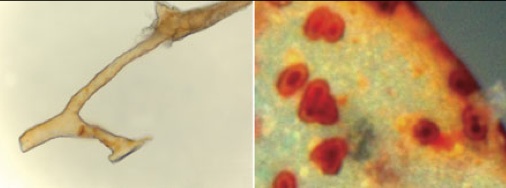 * After the Soft Tissue Discoveries, NOW Dino DNA: When a North Carolina State University paleontologist took the Tyrannosaurus Rex photos to the right of original biological material, that led to the 2016 discovery of dinosaur DNA, So far researchers have also recovered dinosaur blood vessels, collagen, osteocytes, hemoglobin, red blood cells, and various proteins.
* After the Soft Tissue Discoveries, NOW Dino DNA: When a North Carolina State University paleontologist took the Tyrannosaurus Rex photos to the right of original biological material, that led to the 2016 discovery of dinosaur DNA, So far researchers have also recovered dinosaur blood vessels, collagen, osteocytes, hemoglobin, red blood cells, and various proteins.
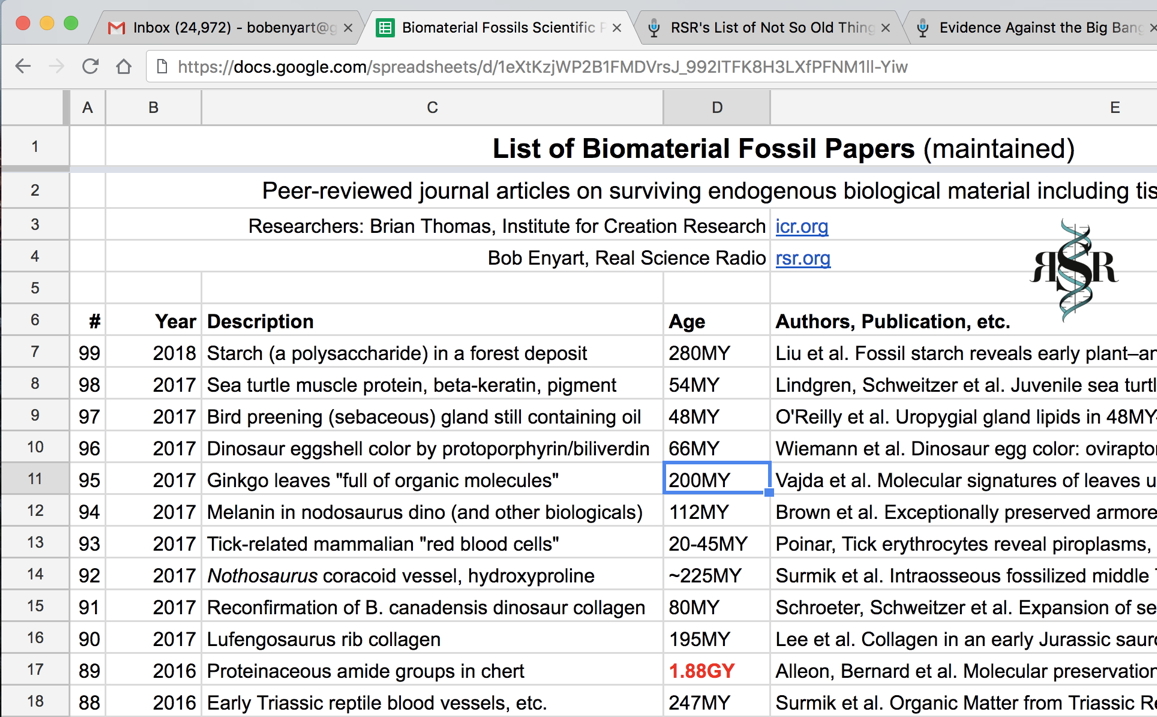 As of May 2018, twenty-six scientific journals, including Nature, Science, PNAS, PLoS One, Bone, and Journal of Vertebrate Paleontology, have confirmed the discovery of biomaterial fossils from many dinosaurs! Organisms including T. Rex, hadrosaur, titanosaur, triceratops, Lufengosaur, mosasaur, and Archaeopteryx, and many others dated, allegedly, even hundreds of millions of years old, have yielded their endogenous, still-soft biological material. See the web's most complete listing of 100+ journal papers (screenshot, left) announcing these discoveries at bflist.rsr.org and see it in layman's terms at rsr.org/soft.
As of May 2018, twenty-six scientific journals, including Nature, Science, PNAS, PLoS One, Bone, and Journal of Vertebrate Paleontology, have confirmed the discovery of biomaterial fossils from many dinosaurs! Organisms including T. Rex, hadrosaur, titanosaur, triceratops, Lufengosaur, mosasaur, and Archaeopteryx, and many others dated, allegedly, even hundreds of millions of years old, have yielded their endogenous, still-soft biological material. See the web's most complete listing of 100+ journal papers (screenshot, left) announcing these discoveries at bflist.rsr.org and see it in layman's terms at rsr.org/soft.
* Rapid Stalactites, Stalagmites, Etc.: A construction worker in 1954 left a lemonade bottle in one of Australia's famous Jenolan Caves. By 2011 it had been naturally transformed into a stalagmite (below, right). Increasing scientific knowledge is arguing for rapid cave formation (see below, Nat'l Park Service shrinks Carlsbad Caverns formation estimates from 260M years, to 10M, to 2M, to it "depends"). Likewise, examples are growing of rapid formations with typical chemical make-up (see bottle, left) of classic stalactites and stalagmites including:
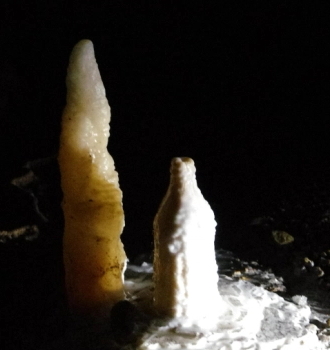 - in Nat'l Geo the Carlsbad Caverns stalagmite that rapidly covered a bat
- in Nat'l Geo the Carlsbad Caverns stalagmite that rapidly covered a bat
- the tunnel stalagmites at Tennessee's Raccoon Mountain
- hundreds of stalactites beneath the Lincoln Memorial
- those near Gladfelter Hall at Philadelphia's Temple University (send photos to Bob@rsr.org)
- hundreds of stalactites at Australia's zinc mine at Mt. Isa.
- and those beneath Melbourne's Shrine of Remembrance.
* Most Human Mutations Arose in 200 Generations: From Adam until Real Science Radio, in only 200 generations! The journal Nature reports The Recent Origin of Most Human Protein-coding Variants. As summarized by geneticist co-author Joshua Akey, "Most of the mutations that we found arose in the last 200 generations or so" (the same number previously published by biblical creationists). Another 2012 paper, in the American Journal of Physical Anthropology (Eugenie Scott's own field) on High mitochondrial mutation rates, shows that one mitochondrial DNA mutation occurs every other generation, which, as creationists point out, indicates that mtEve would have lived about 200 generations ago. That's not so old!
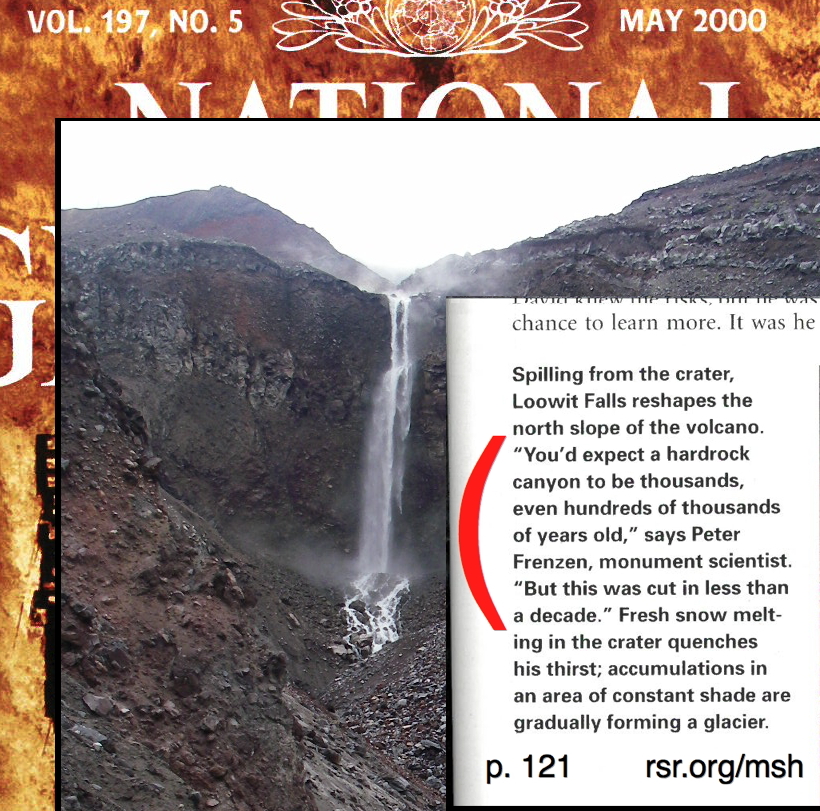 [/url]* National Geographic's Not-So-Old Hard-Rock Canyon at Mount St. Helens[/b]: As our List of Not So Old Things (this web page) reveals, by a kneejerk reaction evolutionary scientists assign ages of tens or hundreds of thousands of years (or at least just long enough to contradict Moses' chronology in Genesis.) However, with closer study, routinely, more and more old ages get revised downward to fit the world's growing scientific knowledge. So the trend is not that more information lengthens ages, but rather, as data replaces guesswork, ages tend to shrink until they are consistent with the young-earth biblical timeframe. Consistent with this observation, the May 2000 issue of National Geographic quotes the U.S. Forest Service's scientist at Mount St. Helens, Peter Frenzen, describing the canyon on the north side of the volcano. "You'd expect a hard-rock canyon to be thousands, even hundreds of thousands of years old. But this was cut in less than a decade." And as for the volcano itself, while again, the kneejerk reaction of old-earthers would be to claim that most geologic features are hundreds of thousands or millions of years old, the atheistic National Geographic magazine acknowledges from the evidence that Mount St. Helens, the volcanic mount, is only about 4,000 years old! See below and more at rsr.org/mount-st-helens.
[/url]* National Geographic's Not-So-Old Hard-Rock Canyon at Mount St. Helens[/b]: As our List of Not So Old Things (this web page) reveals, by a kneejerk reaction evolutionary scientists assign ages of tens or hundreds of thousands of years (or at least just long enough to contradict Moses' chronology in Genesis.) However, with closer study, routinely, more and more old ages get revised downward to fit the world's growing scientific knowledge. So the trend is not that more information lengthens ages, but rather, as data replaces guesswork, ages tend to shrink until they are consistent with the young-earth biblical timeframe. Consistent with this observation, the May 2000 issue of National Geographic quotes the U.S. Forest Service's scientist at Mount St. Helens, Peter Frenzen, describing the canyon on the north side of the volcano. "You'd expect a hard-rock canyon to be thousands, even hundreds of thousands of years old. But this was cut in less than a decade." And as for the volcano itself, while again, the kneejerk reaction of old-earthers would be to claim that most geologic features are hundreds of thousands or millions of years old, the atheistic National Geographic magazine acknowledges from the evidence that Mount St. Helens, the volcanic mount, is only about 4,000 years old! See below and more at rsr.org/mount-st-helens.
* Mount St. Helens Dome Ten Years Old not 1.7 Million: Geochron Laboratories of Cambridge, Mass., using potassium-argon and other radiometric techniques claims the rock sample they dated, from the volcano's dome, solidified somewhere between 340,000 and 2.8 million years ago. However photographic evidence and historical reports document the dome's formation during the 1980s, just ten years prior to the samples being collected. With the age of this rock known, radiometric dating therefore gets the age 99.99999% wrong.
 * Devils Hole Pupfish Isolated Not for 13,000 Years But for 100[/b]: Secular scientists default to knee-jerk, older-than-Bible-age dates. However, a tiny Mojave desert fish is having none of it. Rather than having been genetically isolated from other fish for 13,000 years (which would make this small school of fish older than the Earth itself), according to a paper in the journal Nature, actual measurements of mutation rates indicate that the genetic diversity of these Pupfish could have been generated in about 100 years, give or take a few.
* Devils Hole Pupfish Isolated Not for 13,000 Years But for 100[/b]: Secular scientists default to knee-jerk, older-than-Bible-age dates. However, a tiny Mojave desert fish is having none of it. Rather than having been genetically isolated from other fish for 13,000 years (which would make this small school of fish older than the Earth itself), according to a paper in the journal Nature, actual measurements of mutation rates indicate that the genetic diversity of these Pupfish could have been generated in about 100 years, give or take a few.
 * Polystrates like Spines and Rare Schools of Fossilized Jellyfish[/b]: Previously, seven sedimentary layers in Wisconsin had been described as taking a million years to form. And because jellyfish have no skeleton, as Charles Darwin pointed out, it is rare to find them among fossils. But now, reported in the journal Geology, a school of jellyfish fossils have been found throughout those same seven layers. So, polystrate fossils that condense the time of strata deposition from eons to hours or months, include:
* Polystrates like Spines and Rare Schools of Fossilized Jellyfish[/b]: Previously, seven sedimentary layers in Wisconsin had been described as taking a million years to form. And because jellyfish have no skeleton, as Charles Darwin pointed out, it is rare to find them among fossils. But now, reported in the journal Geology, a school of jellyfish fossils have been found throughout those same seven layers. So, polystrate fossils that condense the time of strata deposition from eons to hours or months, include:
- Jellyfish in central Wisconsin were not deposited and fossilized over a million years but during a single event quick enough to trap a whole school. (This fossil school, therefore, taken as a unit forms a polystrate fossil.) Examples are everywhere that falsify the claims of strata deposition over millions of years.
- Countless trilobites buried in astounding three dimensionality around the world are meticulously recovered from limestone, much of which is claimed to have been deposited very slowly. Contrariwise, because these specimens were buried rapidly in quickly laid down sediments, they show no evidence of greater erosion on their upper parts as compared to their lower parts.
 - The delicacy of radiating spine polystrates, like tadpole and jellyfish fossils, especially clearly demonstrate the rapidity of such strata deposition.
- The delicacy of radiating spine polystrates, like tadpole and jellyfish fossils, especially clearly demonstrate the rapidity of such strata deposition.
- A second school of jellyfish, even though they rarely fossilized, exists in another locale with jellyfish fossils in multiple layers, in Australia's Brockman Iron Formation, constraining there too the rate of strata deposition. By the way, jellyfish are an example of evolution's big squeeze. Like galaxies evolving too quickly, galaxy clusters, and even human feet (which, like Mummy DNA, challenge the Out of Africa paradigm), jellyfish have gotten into the act squeezing evolution's timeline, here by 200 million years when they were found in strata allegedly a half-a-billion years old. Other examples, ironically referred to as Medusoid Problematica, are even found in pre-Cambrian strata.
- 171 tadpoles of the same species buried in diatoms.
- Leaves buried vertically through single-celled diatoms powerfully refute the claimed super-slow deposition of diatomaceous rock.
- Many fossils, including a Mesosaur, have been buried in multiple "varve" layers, which are claimed to be annual depositions, yet they show no erosional patterns that would indicate gradual burial (as they claim, absurdly, over even thousands of years).
- A single whale skeleton preserved in California in dozens of layers of diatom deposits thus forming a polystrate fossil.
- 40 whales buried in the desert in Chile. "What's really interesting is that this didn't just happen once," said Smithsonian evolutionist Dr. Nick Pyenson. It happened four times." Why's that? Because "the fossil site has at least four layers", to which Real Science Radio's Bob Enyart replies: "Ha ha ha ha ha ha ha ha ha ha ha", with RSR co-host Fred Williams thoughtfully adding, "Ha ha!"
 * Polystrate Trees[/b]: Examples abound around the world of polystrate trees:
* Polystrate Trees[/b]: Examples abound around the world of polystrate trees:
- Yellowstone's petrified polystrate forest (with the NPS exhibit sign removed; see below) with successive layers of rootless trees demonstrating the rapid deposition of fifty layers of strata.
- A similarly formed polystrate fossil forest in France demonstrating the rapid deposition of a dozen strata.
- In a thousand locations including famously the Fossil Cliffs of Joggins, Nova Scotia, polystrate fossils such as trees span many strata.
- These trees lack erosion: Not only should such fossils, generally speaking, not even exist, but polystrates including trees typically show no evidence of erosion increasing with height. All of this powerfully disproves the claim that the layers were deposited slowly over thousands or millions of years. In the experience of your RSR radio hosts, evolutionists commonly respond to this hard evidence with mocking. See CRSQ June 2006, ICR Impact #316, and RSR 8-11-06 at KGOV.com.
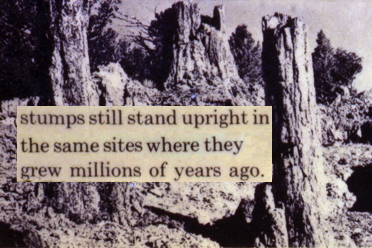 * Yellowstone Petrified Trees Sign Removed: The National Park Service removed their incorrect sign (see left and more). The NPS had claimed that in dozens of different strata over a 40-square mile area, many petrified trees were still standing where they had grown. The NPS eventually removed the sign partly because those petrified trees had no root systems, which they would have had if they had grown there. Instead, the trees of this "fossil forest" have roots that are abruptly broken off two or three feet from their trunks. If these mature trees actually had been remnants of sequential forests that had grown up in strata layer on top of strata layer, 27 times on Specimen Ridge (and 50 times at Specimen Creek), such a natural history implies passage of more time than permitted by biblical chronology. So, don't trust the National Park Service on historical science because they're wrong on the age of the Earth.
* Yellowstone Petrified Trees Sign Removed: The National Park Service removed their incorrect sign (see left and more). The NPS had claimed that in dozens of different strata over a 40-square mile area, many petrified trees were still standing where they had grown. The NPS eventually removed the sign partly because those petrified trees had no root systems, which they would have had if they had grown there. Instead, the trees of this "fossil forest" have roots that are abruptly broken off two or three feet from their trunks. If these mature trees actually had been remnants of sequential forests that had grown up in strata layer on top of strata layer, 27 times on Specimen Ridge (and 50 times at Specimen Creek), such a natural history implies passage of more time than permitted by biblical chronology. So, don't trust the National Park Service on historical science because they're wrong on the age of the Earth.
[video:
theme:dark color:red provider:youtube align:center]
* Wood Petrifies Quickly: Not surprisingly, by the common evolutionary knee-jerk claim of deep time, "several researchers believe that several millions of years are necessary for the complete formation of silicified wood". Our List of Not So Old and Not So Slow Things includes the work of five Japanese scientists who proved creationist research and published their results in the peer-reviewed journal Sedimentary Geology showing that wood can and does petrify rapidly. Modern wood significantly petrified in 36 years these researchers concluded that wood buried in strata could have been petrified in "a fairly short period of time, in the order of several tens to hundreds of years."
 * The Scablands: The primary surface features of the Scablands, which cover thousands of square miles of eastern Washington, were long believed to have formed gradually. Yet, against the determined claims of uniformitarian geologists, there is now overwhelming evidence as presented even in a NOVA TV program that the primary features of the Scablands formed rapidly from a catastrophic breach of Lake Missoula causing a massive regional flood. Of course evolutionary geologists still argue that the landscape was formed over tens of thousands of years, now by claiming there must have been a hundred Missoula floods. However, the evidence that there was Only One Lake Missoula Flood has been powerfully reinforced by a University of Colorado Ph.D. thesis. So the Scablands itself is no longer available to old-earthers as de facto evidence for the passage of millions of years.
* The Scablands: The primary surface features of the Scablands, which cover thousands of square miles of eastern Washington, were long believed to have formed gradually. Yet, against the determined claims of uniformitarian geologists, there is now overwhelming evidence as presented even in a NOVA TV program that the primary features of the Scablands formed rapidly from a catastrophic breach of Lake Missoula causing a massive regional flood. Of course evolutionary geologists still argue that the landscape was formed over tens of thousands of years, now by claiming there must have been a hundred Missoula floods. However, the evidence that there was Only One Lake Missoula Flood has been powerfully reinforced by a University of Colorado Ph.D. thesis. So the Scablands itself is no longer available to old-earthers as de facto evidence for the passage of millions of years.
This is the show from Friday, June 25th, 2021
SUMMARY:
 [While Bob & Cheryl Enyart go fishing we invite you to enjoy from the RSR archives our favorite List of Not So Old Things! Photos from today, June 25, 2021.]
[While Bob & Cheryl Enyart go fishing we invite you to enjoy from the RSR archives our favorite List of Not So Old Things! Photos from today, June 25, 2021.]-- Finches Diversify in Decades, Opals Form in Months, Man's Genetic Diversity in 200 Generations, C-14 Everywhere: Real Science Radio hosts Bob Enyart and Fred Williams present their classic program that led to the audience-favorites rsr.org/list-shows! See below and hear on today's radio program our list of Not So Old and Not So Slow Things! From opals forming in months to man's genetic diversity in 200 generations, and with carbon 14 everywhere it's not supposed to be (including in diamonds and dinosaur bones!), scientific observations fill the guys' most traditional list challenging those who claim that the earth is billions of years old. Many of these scientific finds demand a re-evaluation of supposed million and billion-year ages.

 * Opals Can Form in "A Few Months" And Don't Need 100,000 Years[/b]: A leading authority on opals, Allan W. Eckert, observed that, "scientific papers and textbooks have told that the process of opal formation requires tens of thousands of years, perhaps hundreds of thousands... Not true." A 2011 peer-reviewed paper in a geology journal from Australia, where almost all the world's opal is found, reported on the: "new timetable for opal formation involving weeks to a few months and not the hundreds of thousands of years envisaged by the conventional weathering model." (And apparently, per a 2019 report from Entomology Today, opals can even form around insects!) More knowledgeable scientists resist the uncritical, group-think insistence on false super-slow formation rates (as also for manganese nodules, gold veins, stone, petroleum, canyons and gullies, and even guts, all below). Regarding opals, Darwinian bias led geologists to long ignore possible quick action, as from microbes, as a possible explanation for these mineraloids. For both in nature and in the lab, opals form rapidly, not even in 10,000 years, but in weeks. See this also from creationists by a geologist, a paleobiochemist, and a nuclear chemist.
* Opals Can Form in "A Few Months" And Don't Need 100,000 Years[/b]: A leading authority on opals, Allan W. Eckert, observed that, "scientific papers and textbooks have told that the process of opal formation requires tens of thousands of years, perhaps hundreds of thousands... Not true." A 2011 peer-reviewed paper in a geology journal from Australia, where almost all the world's opal is found, reported on the: "new timetable for opal formation involving weeks to a few months and not the hundreds of thousands of years envisaged by the conventional weathering model." (And apparently, per a 2019 report from Entomology Today, opals can even form around insects!) More knowledgeable scientists resist the uncritical, group-think insistence on false super-slow formation rates (as also for manganese nodules, gold veins, stone, petroleum, canyons and gullies, and even guts, all below). Regarding opals, Darwinian bias led geologists to long ignore possible quick action, as from microbes, as a possible explanation for these mineraloids. For both in nature and in the lab, opals form rapidly, not even in 10,000 years, but in weeks. See this also from creationists by a geologist, a paleobiochemist, and a nuclear chemist.* Finches Speciate in Two Generations vs Two Million Years for Darwin's Birds? Darwin's finches on the Galapagos Islands are said to have diversified into 14 species over a period of two million years. But in 2017 the journal Science reported a newcomer to the Island which within two generations spawned a reproductively isolated new species. In another instance as documented by Lee Spetner, a hundred birds of the same finch species introduced to an island cluster a 1,000 kilometers from Galapagos diversified into species with the typical variations in beak sizes, etc. "If this diversification occurred in less than seventeen years," Dr. Spetner asks, "why did Darwin’s Galapagos finches [as claimed by evolutionists] have to take two million years?"

* Adding the Entire Universe to our List of Not So Old Things? Based on March 2019 findings from Hubble, Nobel laureate Adam Riess of the Space Telescope Science Institute and his co-authors in the Astrophysical Journal estimate that the universe is about a billion years younger than previously thought! Then in September 2019 in the journal Science, the age dropped precipitiously to as low as 11.4 billion years! Of course, these measurements also further squeeze the canonical story of the big bang chronology with its many already existing problems including the insufficient time to "evolve" distant mature galaxies, galaxy clusters, superclusters, enormous black holes, filaments, bubbles, walls, and other superstructures. So, even though the latest estimates are still absurdly too old (Google: big bang predictions, and click on the #1 ranked article, or just go on over there to rsr.org/bb), regardless, we thought we'd plop the whole universe down on our List of Not So Old Things!
 * After the Soft Tissue Discoveries, NOW Dino DNA: When a North Carolina State University paleontologist took the Tyrannosaurus Rex photos to the right of original biological material, that led to the 2016 discovery of dinosaur DNA, So far researchers have also recovered dinosaur blood vessels, collagen, osteocytes, hemoglobin, red blood cells, and various proteins.
* After the Soft Tissue Discoveries, NOW Dino DNA: When a North Carolina State University paleontologist took the Tyrannosaurus Rex photos to the right of original biological material, that led to the 2016 discovery of dinosaur DNA, So far researchers have also recovered dinosaur blood vessels, collagen, osteocytes, hemoglobin, red blood cells, and various proteins. As of May 2018, twenty-six scientific journals, including Nature, Science, PNAS, PLoS One, Bone, and Journal of Vertebrate Paleontology, have confirmed the discovery of biomaterial fossils from many dinosaurs! Organisms including T. Rex, hadrosaur, titanosaur, triceratops, Lufengosaur, mosasaur, and Archaeopteryx, and many others dated, allegedly, even hundreds of millions of years old, have yielded their endogenous, still-soft biological material. See the web's most complete listing of 100+ journal papers (screenshot, left) announcing these discoveries at bflist.rsr.org and see it in layman's terms at rsr.org/soft.
As of May 2018, twenty-six scientific journals, including Nature, Science, PNAS, PLoS One, Bone, and Journal of Vertebrate Paleontology, have confirmed the discovery of biomaterial fossils from many dinosaurs! Organisms including T. Rex, hadrosaur, titanosaur, triceratops, Lufengosaur, mosasaur, and Archaeopteryx, and many others dated, allegedly, even hundreds of millions of years old, have yielded their endogenous, still-soft biological material. See the web's most complete listing of 100+ journal papers (screenshot, left) announcing these discoveries at bflist.rsr.org and see it in layman's terms at rsr.org/soft.* Rapid Stalactites, Stalagmites, Etc.: A construction worker in 1954 left a lemonade bottle in one of Australia's famous Jenolan Caves. By 2011 it had been naturally transformed into a stalagmite (below, right). Increasing scientific knowledge is arguing for rapid cave formation (see below, Nat'l Park Service shrinks Carlsbad Caverns formation estimates from 260M years, to 10M, to 2M, to it "depends"). Likewise, examples are growing of rapid formations with typical chemical make-up (see bottle, left) of classic stalactites and stalagmites including:
 - in Nat'l Geo the Carlsbad Caverns stalagmite that rapidly covered a bat
- in Nat'l Geo the Carlsbad Caverns stalagmite that rapidly covered a bat- the tunnel stalagmites at Tennessee's Raccoon Mountain
- hundreds of stalactites beneath the Lincoln Memorial
- those near Gladfelter Hall at Philadelphia's Temple University (send photos to Bob@rsr.org)
- hundreds of stalactites at Australia's zinc mine at Mt. Isa.
- and those beneath Melbourne's Shrine of Remembrance.
* Most Human Mutations Arose in 200 Generations: From Adam until Real Science Radio, in only 200 generations! The journal Nature reports The Recent Origin of Most Human Protein-coding Variants. As summarized by geneticist co-author Joshua Akey, "Most of the mutations that we found arose in the last 200 generations or so" (the same number previously published by biblical creationists). Another 2012 paper, in the American Journal of Physical Anthropology (Eugenie Scott's own field) on High mitochondrial mutation rates, shows that one mitochondrial DNA mutation occurs every other generation, which, as creationists point out, indicates that mtEve would have lived about 200 generations ago. That's not so old!
 [/url]* National Geographic's Not-So-Old Hard-Rock Canyon at Mount St. Helens[/b]: As our List of Not So Old Things (this web page) reveals, by a kneejerk reaction evolutionary scientists assign ages of tens or hundreds of thousands of years (or at least just long enough to contradict Moses' chronology in Genesis.) However, with closer study, routinely, more and more old ages get revised downward to fit the world's growing scientific knowledge. So the trend is not that more information lengthens ages, but rather, as data replaces guesswork, ages tend to shrink until they are consistent with the young-earth biblical timeframe. Consistent with this observation, the May 2000 issue of National Geographic quotes the U.S. Forest Service's scientist at Mount St. Helens, Peter Frenzen, describing the canyon on the north side of the volcano. "You'd expect a hard-rock canyon to be thousands, even hundreds of thousands of years old. But this was cut in less than a decade." And as for the volcano itself, while again, the kneejerk reaction of old-earthers would be to claim that most geologic features are hundreds of thousands or millions of years old, the atheistic National Geographic magazine acknowledges from the evidence that Mount St. Helens, the volcanic mount, is only about 4,000 years old! See below and more at rsr.org/mount-st-helens.
[/url]* National Geographic's Not-So-Old Hard-Rock Canyon at Mount St. Helens[/b]: As our List of Not So Old Things (this web page) reveals, by a kneejerk reaction evolutionary scientists assign ages of tens or hundreds of thousands of years (or at least just long enough to contradict Moses' chronology in Genesis.) However, with closer study, routinely, more and more old ages get revised downward to fit the world's growing scientific knowledge. So the trend is not that more information lengthens ages, but rather, as data replaces guesswork, ages tend to shrink until they are consistent with the young-earth biblical timeframe. Consistent with this observation, the May 2000 issue of National Geographic quotes the U.S. Forest Service's scientist at Mount St. Helens, Peter Frenzen, describing the canyon on the north side of the volcano. "You'd expect a hard-rock canyon to be thousands, even hundreds of thousands of years old. But this was cut in less than a decade." And as for the volcano itself, while again, the kneejerk reaction of old-earthers would be to claim that most geologic features are hundreds of thousands or millions of years old, the atheistic National Geographic magazine acknowledges from the evidence that Mount St. Helens, the volcanic mount, is only about 4,000 years old! See below and more at rsr.org/mount-st-helens.* Mount St. Helens Dome Ten Years Old not 1.7 Million: Geochron Laboratories of Cambridge, Mass., using potassium-argon and other radiometric techniques claims the rock sample they dated, from the volcano's dome, solidified somewhere between 340,000 and 2.8 million years ago. However photographic evidence and historical reports document the dome's formation during the 1980s, just ten years prior to the samples being collected. With the age of this rock known, radiometric dating therefore gets the age 99.99999% wrong.
 * Devils Hole Pupfish Isolated Not for 13,000 Years But for 100[/b]: Secular scientists default to knee-jerk, older-than-Bible-age dates. However, a tiny Mojave desert fish is having none of it. Rather than having been genetically isolated from other fish for 13,000 years (which would make this small school of fish older than the Earth itself), according to a paper in the journal Nature, actual measurements of mutation rates indicate that the genetic diversity of these Pupfish could have been generated in about 100 years, give or take a few.
* Devils Hole Pupfish Isolated Not for 13,000 Years But for 100[/b]: Secular scientists default to knee-jerk, older-than-Bible-age dates. However, a tiny Mojave desert fish is having none of it. Rather than having been genetically isolated from other fish for 13,000 years (which would make this small school of fish older than the Earth itself), according to a paper in the journal Nature, actual measurements of mutation rates indicate that the genetic diversity of these Pupfish could have been generated in about 100 years, give or take a few.
- Jellyfish in central Wisconsin were not deposited and fossilized over a million years but during a single event quick enough to trap a whole school. (This fossil school, therefore, taken as a unit forms a polystrate fossil.) Examples are everywhere that falsify the claims of strata deposition over millions of years.
- Countless trilobites buried in astounding three dimensionality around the world are meticulously recovered from limestone, much of which is claimed to have been deposited very slowly. Contrariwise, because these specimens were buried rapidly in quickly laid down sediments, they show no evidence of greater erosion on their upper parts as compared to their lower parts.
 - The delicacy of radiating spine polystrates, like tadpole and jellyfish fossils, especially clearly demonstrate the rapidity of such strata deposition.
- The delicacy of radiating spine polystrates, like tadpole and jellyfish fossils, especially clearly demonstrate the rapidity of such strata deposition.- A second school of jellyfish, even though they rarely fossilized, exists in another locale with jellyfish fossils in multiple layers, in Australia's Brockman Iron Formation, constraining there too the rate of strata deposition. By the way, jellyfish are an example of evolution's big squeeze. Like galaxies evolving too quickly, galaxy clusters, and even human feet (which, like Mummy DNA, challenge the Out of Africa paradigm), jellyfish have gotten into the act squeezing evolution's timeline, here by 200 million years when they were found in strata allegedly a half-a-billion years old. Other examples, ironically referred to as Medusoid Problematica, are even found in pre-Cambrian strata.
- 171 tadpoles of the same species buried in diatoms.
- Leaves buried vertically through single-celled diatoms powerfully refute the claimed super-slow deposition of diatomaceous rock.
- Many fossils, including a Mesosaur, have been buried in multiple "varve" layers, which are claimed to be annual depositions, yet they show no erosional patterns that would indicate gradual burial (as they claim, absurdly, over even thousands of years).
- A single whale skeleton preserved in California in dozens of layers of diatom deposits thus forming a polystrate fossil.
- 40 whales buried in the desert in Chile. "What's really interesting is that this didn't just happen once," said Smithsonian evolutionist Dr. Nick Pyenson. It happened four times." Why's that? Because "the fossil site has at least four layers", to which Real Science Radio's Bob Enyart replies: "Ha ha ha ha ha ha ha ha ha ha ha", with RSR co-host Fred Williams thoughtfully adding, "Ha ha!"
 * Polystrate Trees[/b]: Examples abound around the world of polystrate trees:
* Polystrate Trees[/b]: Examples abound around the world of polystrate trees:- Yellowstone's petrified polystrate forest (with the NPS exhibit sign removed; see below) with successive layers of rootless trees demonstrating the rapid deposition of fifty layers of strata.
- A similarly formed polystrate fossil forest in France demonstrating the rapid deposition of a dozen strata.
- In a thousand locations including famously the Fossil Cliffs of Joggins, Nova Scotia, polystrate fossils such as trees span many strata.
- These trees lack erosion: Not only should such fossils, generally speaking, not even exist, but polystrates including trees typically show no evidence of erosion increasing with height. All of this powerfully disproves the claim that the layers were deposited slowly over thousands or millions of years. In the experience of your RSR radio hosts, evolutionists commonly respond to this hard evidence with mocking. See CRSQ June 2006, ICR Impact #316, and RSR 8-11-06 at KGOV.com.
 * Yellowstone Petrified Trees Sign Removed: The National Park Service removed their incorrect sign (see left and more). The NPS had claimed that in dozens of different strata over a 40-square mile area, many petrified trees were still standing where they had grown. The NPS eventually removed the sign partly because those petrified trees had no root systems, which they would have had if they had grown there. Instead, the trees of this "fossil forest" have roots that are abruptly broken off two or three feet from their trunks. If these mature trees actually had been remnants of sequential forests that had grown up in strata layer on top of strata layer, 27 times on Specimen Ridge (and 50 times at Specimen Creek), such a natural history implies passage of more time than permitted by biblical chronology. So, don't trust the National Park Service on historical science because they're wrong on the age of the Earth.
* Yellowstone Petrified Trees Sign Removed: The National Park Service removed their incorrect sign (see left and more). The NPS had claimed that in dozens of different strata over a 40-square mile area, many petrified trees were still standing where they had grown. The NPS eventually removed the sign partly because those petrified trees had no root systems, which they would have had if they had grown there. Instead, the trees of this "fossil forest" have roots that are abruptly broken off two or three feet from their trunks. If these mature trees actually had been remnants of sequential forests that had grown up in strata layer on top of strata layer, 27 times on Specimen Ridge (and 50 times at Specimen Creek), such a natural history implies passage of more time than permitted by biblical chronology. So, don't trust the National Park Service on historical science because they're wrong on the age of the Earth.[video:
* Wood Petrifies Quickly: Not surprisingly, by the common evolutionary knee-jerk claim of deep time, "several researchers believe that several millions of years are necessary for the complete formation of silicified wood". Our List of Not So Old and Not So Slow Things includes the work of five Japanese scientists who proved creationist research and published their results in the peer-reviewed journal Sedimentary Geology showing that wood can and does petrify rapidly. Modern wood significantly petrified in 36 years these researchers concluded that wood buried in strata could have been petrified in "a fairly short period of time, in the order of several tens to hundreds of years."
 * The Scablands: The primary surface features of the Scablands, which cover thousands of square miles of eastern Washington, were long believed to have formed gradually. Yet, against the determined claims of uniformitarian geologists, there is now overwhelming evidence as presented even in a NOVA TV program that the primary features of the Scablands formed rapidly from a catastrophic breach of Lake Missoula causing a massive regional flood. Of course evolutionary geologists still argue that the landscape was formed over tens of thousands of years, now by claiming there must have been a hundred Missoula floods. However, the evidence that there was Only One Lake Missoula Flood has been powerfully reinforced by a University of Colorado Ph.D. thesis. So the Scablands itself is no longer available to old-earthers as de facto evidence for the passage of millions of years.
* The Scablands: The primary surface features of the Scablands, which cover thousands of square miles of eastern Washington, were long believed to have formed gradually. Yet, against the determined claims of uniformitarian geologists, there is now overwhelming evidence as presented even in a NOVA TV program that the primary features of the Scablands formed rapidly from a catastrophic breach of Lake Missoula causing a massive regional flood. Of course evolutionary geologists still argue that the landscape was formed over tens of thousands of years, now by claiming there must have been a hundred Missoula floods. However, the evidence that there was Only One Lake Missoula Flood has been powerfully reinforced by a University of Colorado Ph.D. thesis. So the Scablands itself is no longer available to old-earthers as de facto evidence for the passage of millions of years.


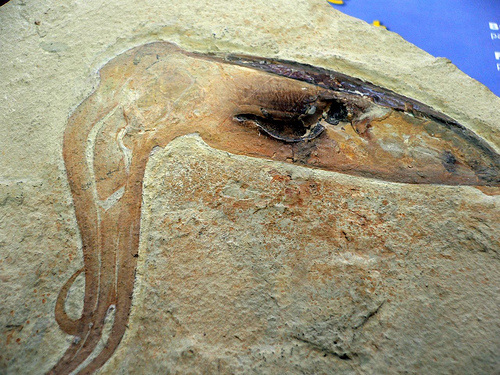



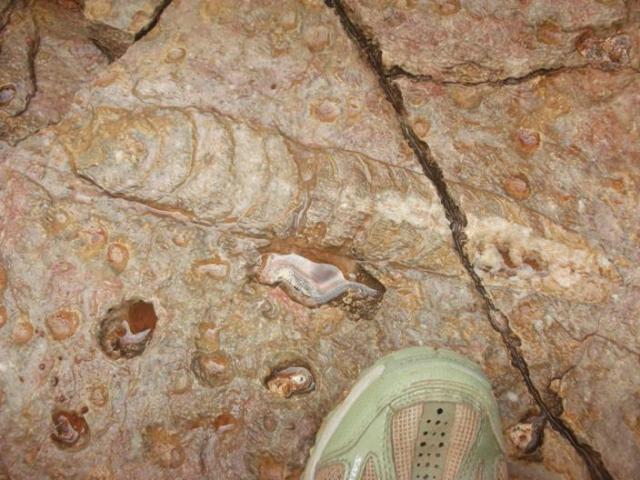

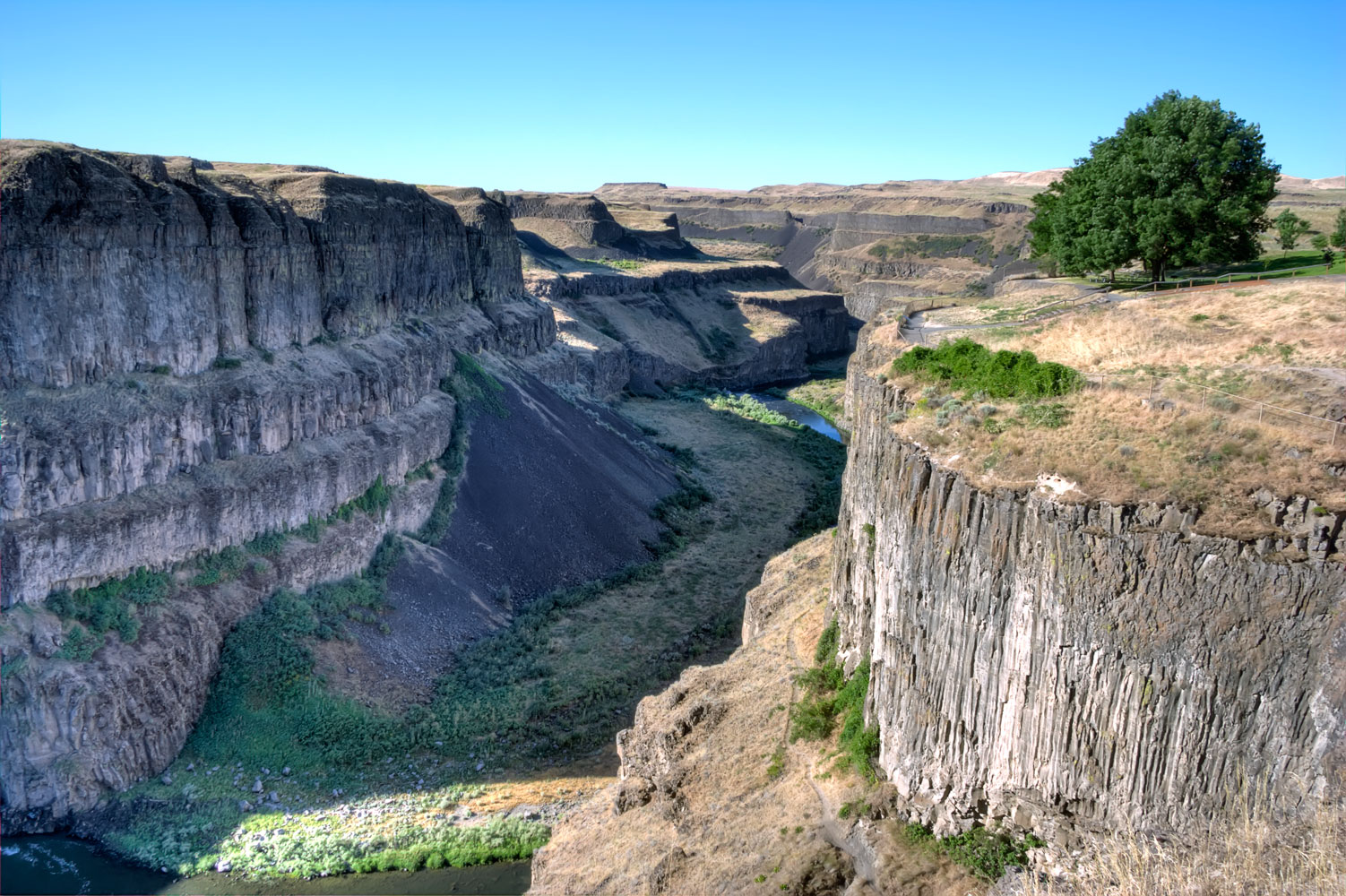







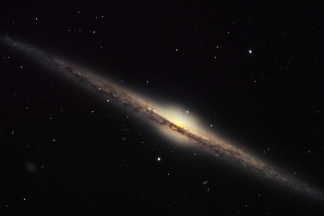


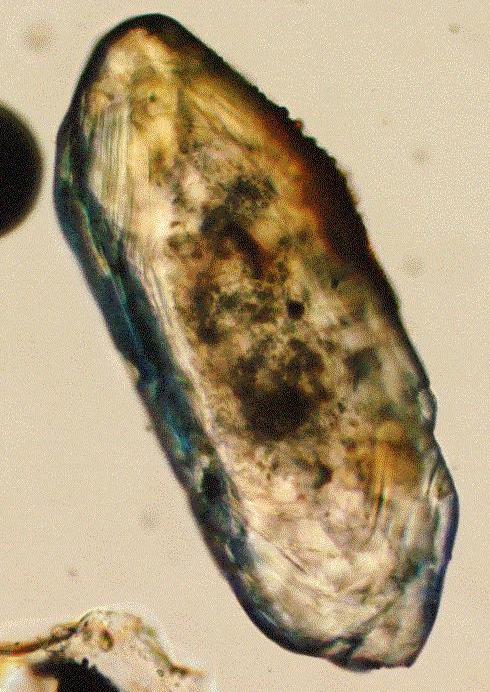
 zircons were that old, and if uranium always decayed slowly over hundreds of millions of years, then zircons should have almost no helium in them because it would have diffused out relatively quickly. However, a Ph.D. geophysicist from Los Alamos Nat'l Labs and other physicists and scientists [url=http://creationresearch.org/crsq/articles/41/41_1/Helium.htm]published a prediction of the rate of helium diffusion from zircons at various temperatures. A high-precision laboratory then measured actual diffusion rates which dramatically matched their predictions, which were based on a 6,000 year age of the zircons. Meanwhile, a prediction based on billion-year ages would be off by a factor of about 10,000. [url=http://kgov.com/zircon-uranium-lead-radiometric-dating-and-helium-and-a-young-earth]more...
zircons were that old, and if uranium always decayed slowly over hundreds of millions of years, then zircons should have almost no helium in them because it would have diffused out relatively quickly. However, a Ph.D. geophysicist from Los Alamos Nat'l Labs and other physicists and scientists [url=http://creationresearch.org/crsq/articles/41/41_1/Helium.htm]published a prediction of the rate of helium diffusion from zircons at various temperatures. A high-precision laboratory then measured actual diffusion rates which dramatically matched their predictions, which were based on a 6,000 year age of the zircons. Meanwhile, a prediction based on billion-year ages would be off by a factor of about 10,000. [url=http://kgov.com/zircon-uranium-lead-radiometric-dating-and-helium-and-a-young-earth]more... * One Half of the Earth's Sedimentary Layers Given the Green Light to Speed: A [url=http://www.sciencemag.org/content/318/5857/1760]paper in the journal Science has documented experimental (and common sense) evidence that refutes a fundamental uniformitarian claim that had persisted for many decades. Mudstone, secular geologists believed, had to be deposited slowly over long ages because particles of mud cannot settle, they claimed, out of fast running water but, they believed, required long ages to precipitate out of still waters. That claim, [url=http://creation.com/mud-experiments-overturn-long-held-geological-beliefs]evidently false on its face but uncritically accepted because it appeared to falsify the Bible's chronology, has now been refuted as published in one of the world's most prestigious journals.
* One Half of the Earth's Sedimentary Layers Given the Green Light to Speed: A [url=http://www.sciencemag.org/content/318/5857/1760]paper in the journal Science has documented experimental (and common sense) evidence that refutes a fundamental uniformitarian claim that had persisted for many decades. Mudstone, secular geologists believed, had to be deposited slowly over long ages because particles of mud cannot settle, they claimed, out of fast running water but, they believed, required long ages to precipitate out of still waters. That claim, [url=http://creation.com/mud-experiments-overturn-long-held-geological-beliefs]evidently false on its face but uncritically accepted because it appeared to falsify the Bible's chronology, has now been refuted as published in one of the world's most prestigious journals. * Grand Canyon's Millions of Missing Years: According to evolutionary geologists, there are MORE THAN 100 MILLION YEARS MISSING in the extraordinarily regular and straight layers ("flat gap" boundaries) of the Grand Canyon. The supposed geological layers entirely missing from the Grand Canyon strata, according to the National Park Service, are the [url=http://www.nature.nps.gov/geology/education/foos/grand.pdf]Ordovician and the Silurian. The flat boundaries between strata provide hard evidence proving that millions of years of erosion DID NOT OCCUR, and that therefore, those millions of years DID NOT PASS. (This alleged time period passed neither in the canyon, nor anywhere on Earth, of course. However, the secularists claim they have evidence for that time passing elsewhere on Earth. Bizarre.) Also, the enormous side canyons, many of which would be major tourist attractions if they had formed elsewhere on Earth, have no river, Colorado or otherwise, to explain their existence, for they were formed by the rapid drainage of groundwater in the weeks after the flood catastrophically formed after the breach of a natural dam. The Grand Canyon [url=http://rsr.org/grand-canyon]formed rapidly.
* Grand Canyon's Millions of Missing Years: According to evolutionary geologists, there are MORE THAN 100 MILLION YEARS MISSING in the extraordinarily regular and straight layers ("flat gap" boundaries) of the Grand Canyon. The supposed geological layers entirely missing from the Grand Canyon strata, according to the National Park Service, are the [url=http://www.nature.nps.gov/geology/education/foos/grand.pdf]Ordovician and the Silurian. The flat boundaries between strata provide hard evidence proving that millions of years of erosion DID NOT OCCUR, and that therefore, those millions of years DID NOT PASS. (This alleged time period passed neither in the canyon, nor anywhere on Earth, of course. However, the secularists claim they have evidence for that time passing elsewhere on Earth. Bizarre.) Also, the enormous side canyons, many of which would be major tourist attractions if they had formed elsewhere on Earth, have no river, Colorado or otherwise, to explain their existence, for they were formed by the rapid drainage of groundwater in the weeks after the flood catastrophically formed after the breach of a natural dam. The Grand Canyon [url=http://rsr.org/grand-canyon]formed rapidly. * Carlsbad Cavern Formation: The National Park Service repeatedly changed the sign at the cave entrance which, according to U.S. Forest Service geologist Jerry Trout, at first claimed that formation took "260 million years", then "8 million years", then "2 million years", and then they took the sign down altogether. See [url=https://www.youngearth.com/carlsbad-cavern]YoungEarth.com for the documentation. On Bob Enyart's family vacation in 2005 they heard onsite the official Carlsbad audio tour which now accurately states that the, "rate of formation depends on the amount of available water." (Previously, you could enjoy listening to that [url=http://www.nps.gov/cave/planyourvisit/bigroom_selfguided_tour.htm]audio tour online but apparently it has now been removed from the web. In 2016 RSR will try to make that available again.)
* Carlsbad Cavern Formation: The National Park Service repeatedly changed the sign at the cave entrance which, according to U.S. Forest Service geologist Jerry Trout, at first claimed that formation took "260 million years", then "8 million years", then "2 million years", and then they took the sign down altogether. See [url=https://www.youngearth.com/carlsbad-cavern]YoungEarth.com for the documentation. On Bob Enyart's family vacation in 2005 they heard onsite the official Carlsbad audio tour which now accurately states that the, "rate of formation depends on the amount of available water." (Previously, you could enjoy listening to that [url=http://www.nps.gov/cave/planyourvisit/bigroom_selfguided_tour.htm]audio tour online but apparently it has now been removed from the web. In 2016 RSR will try to make that available again.) * Death Valley Volcano Erupts AFTER Formation of Earth: According to the USGS, "The understanding of the timing of eruptions [in Death Valley] and the timing of the building up to eruptions is changing." Anti-biblical bias frequently leads scientists to a knee-jerk claim of events occurring tens of thousands or millions of years ago, which if true would falsify the Bible account of the creation week and the literal interpretation of Genesis presented by Jesus Christ Himself. According to USA Today, in this particular instance, the old claim that a Death Valley eruption occurred 10,000 years ago, which as Isaac Newton himself would have pointed out, would awkwardly have been prior to God's creation of the universe, [url=http://www.usatoday.com/tech/science/environment/story/2012-02-01/deadly-us-volcanoes/52923094/1]actually occurred only 800 years ago, according to more careful scientific observations, as per the trend evident on this list-of-not-so-old-things!
* Death Valley Volcano Erupts AFTER Formation of Earth: According to the USGS, "The understanding of the timing of eruptions [in Death Valley] and the timing of the building up to eruptions is changing." Anti-biblical bias frequently leads scientists to a knee-jerk claim of events occurring tens of thousands or millions of years ago, which if true would falsify the Bible account of the creation week and the literal interpretation of Genesis presented by Jesus Christ Himself. According to USA Today, in this particular instance, the old claim that a Death Valley eruption occurred 10,000 years ago, which as Isaac Newton himself would have pointed out, would awkwardly have been prior to God's creation of the universe, [url=http://www.usatoday.com/tech/science/environment/story/2012-02-01/deadly-us-volcanoes/52923094/1]actually occurred only 800 years ago, according to more careful scientific observations, as per the trend evident on this list-of-not-so-old-things! A Not So Old Finger: Denisovians reproduced extensively with Neanderthal. So this report from ScienceNews is fun! "This ancient [url=https://www.sciencenews.org/article/ancient-stone-age-denisovan-finger-bone-surprisingly-humanlike]Denisovan finger bone is surprisingly humanlike". Exactly, though, surprising only to those who have less understanding.
A Not So Old Finger: Denisovians reproduced extensively with Neanderthal. So this report from ScienceNews is fun! "This ancient [url=https://www.sciencenews.org/article/ancient-stone-age-denisovan-finger-bone-surprisingly-humanlike]Denisovan finger bone is surprisingly humanlike". Exactly, though, surprising only to those who have less understanding.  Now, secular scientists have now used reliable scientific methods to date the tooth. Turns out that it belonged to someone who lived less than 5,000 years ago. (And of course, Neanderthal's were people too! It's just that "[url=http://rsr.org/caveman]cavemen" didn't live all that long ago
Now, secular scientists have now used reliable scientific methods to date the tooth. Turns out that it belonged to someone who lived less than 5,000 years ago. (And of course, Neanderthal's were people too! It's just that "[url=http://rsr.org/caveman]cavemen" didn't live all that long ago 
 * Initial Tests Show Mostly Left-Handed Amino Acids in Amber, Shale, Titanosaur & T. rex Eggshells, and Chert! Like hands and hockey sticks, some molecules are right or left handed. Life uses 100% [url=http://users.rcn.com/jkimball.ma.ultranet/BiologyPages/E/Enantiomers.html]left-handed amino acids to build proteins (and [url=http://www.creationscience.com/onlinebook/LifeSciences40.html]purely right-handed sugars to build DNA). The laws of chemistry demonstrate that after death, amino acids racemize back [url=http://creation.com/shaking-hands-on-a-recent-creation]to a 50-50 mixture of right- and left-handed acids. [url=http://www.ncbi.nlm.nih.gov/pmc/articles/PMC1692449/pdf/10091249.pdf]England's Royal Society published a time range for this physical process which, "produces totally racemized amino acids in 10(5)-10(6) [100,000 to 1,000,000] years in most environments on the Earth." (So researchers have even begun dating whale carcasses by the spherical growth patterns in the eye by measuring the [url=http://pubs.acs.org/subscribe/archive/tcaw/10/i02/html/02brignole.html]percent of left-handed acids in each lens layer.) Yet allegedly far older insects in amber yield mostly left-handed amino acids such that researchers shockingly suggest [url=http://www.ncbi.nlm.nih.gov/pmc/articles/PMC1692449/?tool=pmcentrez&rendertype=abstract]a half-life of a billion years for racemization in amber! See more at [url=http://rsr.org/dinos#amino-acids]rsr.org/dinos#amino-acids.
* Initial Tests Show Mostly Left-Handed Amino Acids in Amber, Shale, Titanosaur & T. rex Eggshells, and Chert! Like hands and hockey sticks, some molecules are right or left handed. Life uses 100% [url=http://users.rcn.com/jkimball.ma.ultranet/BiologyPages/E/Enantiomers.html]left-handed amino acids to build proteins (and [url=http://www.creationscience.com/onlinebook/LifeSciences40.html]purely right-handed sugars to build DNA). The laws of chemistry demonstrate that after death, amino acids racemize back [url=http://creation.com/shaking-hands-on-a-recent-creation]to a 50-50 mixture of right- and left-handed acids. [url=http://www.ncbi.nlm.nih.gov/pmc/articles/PMC1692449/pdf/10091249.pdf]England's Royal Society published a time range for this physical process which, "produces totally racemized amino acids in 10(5)-10(6) [100,000 to 1,000,000] years in most environments on the Earth." (So researchers have even begun dating whale carcasses by the spherical growth patterns in the eye by measuring the [url=http://pubs.acs.org/subscribe/archive/tcaw/10/i02/html/02brignole.html]percent of left-handed acids in each lens layer.) Yet allegedly far older insects in amber yield mostly left-handed amino acids such that researchers shockingly suggest [url=http://www.ncbi.nlm.nih.gov/pmc/articles/PMC1692449/?tool=pmcentrez&rendertype=abstract]a half-life of a billion years for racemization in amber! See more at [url=http://rsr.org/dinos#amino-acids]rsr.org/dinos#amino-acids. * Lizard "Evolves" New Gut in 37 Years! A change in habitat forced a vegetarian diet upon Podarcis sicula lizards. The leafy diet in turn activated [url=http://blog.drwile.com/?p=7699]pre-existing genetic instructions that modified the digestive system in the offspring of seven lizards that had been transported to a nearby island in 1971. When existing genetic information suddently expresses itself, biased scientists, like the Darwin marketing reps at National Geographic, will attempt to trick folks who are not paying close attention into believing that mutation and natural selection created some new biological information. The [url=http://news.nationalgeographic.com/news/2008/04/080421-lizard-evolution_2.html]NG headline reads, "Lizards Rapidly Evolve After Introduction to Island" and the article wrongly claims that, "They evolved an expanded gut [with cecal valves] to allow them to process these leaves... This was a brand-new structure." Once again the pop science press misrepresented the actual [url=http://www.ncbi.nlm.nih.gov/pmc/articles/PMC2290806/]findings of a scientific paper. For other populations of related species, and of the exact same species, have the same structure! "These valves are similar in overall appearance and structure to those found in herbivorous lacertid, agamid, and iguanid lizards and are not found in other populations of P. sicula or in P. melisellensis."
* Lizard "Evolves" New Gut in 37 Years! A change in habitat forced a vegetarian diet upon Podarcis sicula lizards. The leafy diet in turn activated [url=http://blog.drwile.com/?p=7699]pre-existing genetic instructions that modified the digestive system in the offspring of seven lizards that had been transported to a nearby island in 1971. When existing genetic information suddently expresses itself, biased scientists, like the Darwin marketing reps at National Geographic, will attempt to trick folks who are not paying close attention into believing that mutation and natural selection created some new biological information. The [url=http://news.nationalgeographic.com/news/2008/04/080421-lizard-evolution_2.html]NG headline reads, "Lizards Rapidly Evolve After Introduction to Island" and the article wrongly claims that, "They evolved an expanded gut [with cecal valves] to allow them to process these leaves... This was a brand-new structure." Once again the pop science press misrepresented the actual [url=http://www.ncbi.nlm.nih.gov/pmc/articles/PMC2290806/]findings of a scientific paper. For other populations of related species, and of the exact same species, have the same structure! "These valves are similar in overall appearance and structure to those found in herbivorous lacertid, agamid, and iguanid lizards and are not found in other populations of P. sicula or in P. melisellensis."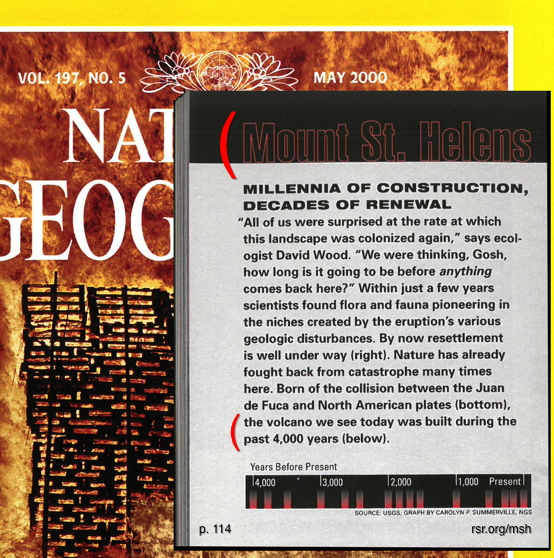 * Mount St. Helens Only 4000 Years Old: The May 2000 issue of National Geographic says about Mount St. Helens, "the volcano we see today was built during the past 4,000 years." Of course the editors of National Geographic believe that the Earth is billions of years old, and that every part of its surface, including under this volcano, has experienced tectonic activity for all that time. Nonetheless, it is interesting to note, and it fits in with the pattern of evidence in our not-so-old list above, that the evidence indicates that one of the largest active volcanos in the U.S. was formed in only about 4,000 years. (In even speedier Mexico, eyewitnesses saw the birth of their [url=http://kgov.com/paricutin-volcano]Paricutin volcano and already its "extinction".) Because old-earthers reflexively claim that most geologic features are hundreds of thousands or millions of years old, it is refreshing to see National Geographic acknowledge Mount St. Helen's youthfulness, so bluntly.
* Mount St. Helens Only 4000 Years Old: The May 2000 issue of National Geographic says about Mount St. Helens, "the volcano we see today was built during the past 4,000 years." Of course the editors of National Geographic believe that the Earth is billions of years old, and that every part of its surface, including under this volcano, has experienced tectonic activity for all that time. Nonetheless, it is interesting to note, and it fits in with the pattern of evidence in our not-so-old list above, that the evidence indicates that one of the largest active volcanos in the U.S. was formed in only about 4,000 years. (In even speedier Mexico, eyewitnesses saw the birth of their [url=http://kgov.com/paricutin-volcano]Paricutin volcano and already its "extinction".) Because old-earthers reflexively claim that most geologic features are hundreds of thousands or millions of years old, it is refreshing to see National Geographic acknowledge Mount St. Helen's youthfulness, so bluntly.
